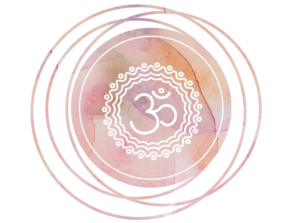Table of Contents
Picture yourself soaking in the soothing embrace of nature, surrounded by vibrant greenery, with the sun gently warming your skin. Take a deep breath, and as you exhale, you feel a sense of tranquility wash over you. This is the kind of harmony you can achieve with the power of yoga, especially when it comes to taking care of your thyroid, the crucial gland responsible for regulating your body’s metabolism and maintaining hormonal balance. Today, we’ll explore four delightful and straightforward asanas that can aid in thyroid care. So, let’s roll out our yoga mats and embark on this journey to balance our thyroid hormones effortlessly.
1. Marjariasana (Cat Pose)

Let’s begin our thyroid-taming adventure with the graceful Marjariasana, also known as the Cat Pose. Think about being a flexible cat, gracefully curving your back, and you’ll understand.
How to do it:
- Place yourself on your hands and knees, making sure your wrists are directly under your shoulders and your hips.
- Inhale deeply while arching the back, lifting both the head and tailbone towards the ceiling.
- Exhale slowly and round your back, tucking your chin to your chest (now, you’re the “cow”).
- Repeat this flowing motion for a few breaths, moving at your own pace.
Duration: Perform this pose for about 1-2 minutes.
Repetitions: Repeat the flowing motion for 5-10 breaths, moving at your own pace.
Benefits:
- Massages the thyroid gland: The gentle rocking motion of the Cat Pose stimulates the thyroid, encouraging better hormonal balance.
- Reduces stress: As you flow through this pose, it calms the mind and reduces stress, which can be particularly helpful for individuals with thyroid issues.
2. Sarvangasana (Shoulder Stand)

Our next stop on this yoga journey is the majestic Sarvangasana, also known as the Shoulder Stand. Imagine lifting your legs and tummy up like a swan flying up in the sky.
How to do it:
- Lie flat on your back and place your hands beside your body, palms facing down.
- Take a deep breath while raising your legs, hips, and torso off the ground. They can support your lower back by using your hands.
- Keep your legs straight and vertical, creating a straight line with your body.
- Keeping your legs straight and vertical, create a straight line with your body.
- Hold this pose for as long as it feels comfortable.
- Maintain focus on slow and deep breaths throughout the duration.
Duration: Hold this pose for as long as you feel comfortable, starting with 30 seconds and gradually increasing the time as you progress.
Repetitions: Practice the Shoulder Stand once or twice, depending on your comfort and stamina.
Benefits:
- Increases blood flow to the neck: The Shoulder Stand helps more blood flow to your neck. This extra blood helps the thyroid gland work better.
- Regulates metabolism: By stimulating the thyroid and parathyroid glands, Sarvangasana can help regulate your metabolism.
3. Setu Bandhasana (Bridge Pose)

Our third pose is Setu Bandhasana, also known as the Bridge Pose. Think of yourself as a strong bridge, gracefully connecting two peaceful spots.
How to do it:
- Lie on your back. You should have your knees bent and feet placed hip-width apart, making sure you are flat against the ground.
- Place your arms alongside your body, palms facing down.
- Inhale deeply and lift your hips off the ground, while keeping your feet and shoulders firmly rooted.
- Hold the pose for several breaths, focusing on a steady inhalation and exhalation.
Duration: Hold the Bridge Pose for 30 seconds to 1 minute, focusing on steady breathing.
Repetitions: Repeat this pose 2-3 times in your practice session.
Benefits:
- Stretches the neck: The Bridge Pose stretches and compresses the neck region, which can stimulate the thyroid gland and improve its function.
- Calms the mind: This pose also helps in reducing anxiety and stress, which are common contributors to thyroid imbalances.
4. Ustrasana (Camel Pose)

Our final asana is the elegant Ustrasana, also known as the Camel Pose. Imagine yourself as a graceful camel, arching backward with poise and grace.
How to do it:
- Start by positioning yourself in a kneeling position, ensuring that your knees are comfortably positioned apart.
- Then, put your hands on your lower back to give yourself some support.
- Inhale deeply and arch your back, gently reaching for your heels with your hands.
- Hold this pose for a few breaths, keeping your neck in a relaxed, neutral position.
Duration: Maintain the Camel Pose for 20-30 seconds.
Repetitions: Perform this pose 2-3 times, gradually increasing the duration as you become more comfortable.
Benefits:
- Stretches the throat: Ustrasana provides a deep stretch to the throat, stimulating the thyroid gland and promoting hormonal balance.
- Enhances posture and openness: This asana encourages an open chest and improved posture, which can have a positive impact on thyroid health.
Conclusion
Regularly practicing these four simple yoga poses can significantly benefit your thyroid health by promoting hormonal balance and overall well-being. Just as a gentle breeze refreshes a forest or a tranquil stream brings harmony to nature, these asanas can bring balance and vitality to your thyroid gland. So, roll out your yoga mat, strike a pose, and give your thyroid the care and attention it deserves. Namaste!



